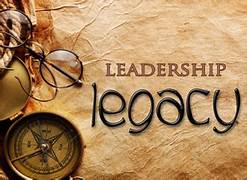The workplace isn’t just moving fast, it’s constantly reinventing itself. Technologies evolve, business models shift, and yesterday’s priorities are replaced by new pressures. Amid all this noise, teams are craving something steady, leadership that’s grounded, purposeful, and built to last. That’s where legacy leadership stands apart. It’s not about quick wins or chasing quarterly metrics. It’s about leading with intention, shaping a culture defined by integrity, vision, and values that outlive any single role or project.
In this post, we’ll break down what legacy leadership really looks like, why it’s urgently needed, and how you can begin leading in a way that leaves a meaningful mark.
1. What Is Legacy Leadership?
Legacy leadership is more than just a leadership style, it’s a mindset.
At its core, legacy leadership focuses on leaving behind something of enduring value. It’s about leading with purpose and empowering others in a way that your impact continues long after you’ve moved on. In contrast to transactional leadership, which is task-driven, or transformational leadership, which is change-focused, legacy leadership is values-driven. It challenges leaders to think beyond themselves and ask: What kind of culture am I building? What values will outlive my time here?
In a modern workplace filled with constant disruption, legacy leadership brings a stabilizing force rooted in timeless principles.
2. The Key Traits of Legacy Leaders
What sets legacy leaders apart? It’s not just their skills, it’s their character.
Here are some of the defining qualities of a legacy-focused leader:
-
Vision – They see beyond today’s to-do list and work toward a future worth building.
-
Integrity – They do what’s right, even when no one is watching.
-
Empathy – They lead with heart, listening deeply and caring about people as much as performance.
-
Consistency – They model the values they promote, day in and day out.
These traits build trust and shape a team culture that can weather challenges and grow stronger over time.
3. How to Practice Legacy Leadership in Your Team
So, how do you bring legacy leadership into your daily work? Here are a few practical strategies:
-
Clarify your core values – Identify the principles that matter most to you and your organization. Make them visible in your decisions and actions.
-
Lead by example – Live the values you want your team to adopt. People follow authenticity more than authority.
-
Mentor and multiply – Invest in your team’s growth. Don’t just manage tasks, build people.
-
Celebrate long-term wins – Recognize behavior that supports the culture you want to create, not just quick results.
Legacy leadership isn’t built in a day, but with intention, it becomes part of your team’s DNA.
4. How Legacy Leadership Shapes Team Culture
When leaders lead with legacy in mind, something powerful happens: teams become more cohesive, motivated, and resilient.
Legacy leadership creates a sense of shared purpose. It encourages people to think beyond individual roles and consider how their work contributes to something bigger. Over time, this fosters:
-
Stronger collaboration – Values create alignment, reducing conflict and boosting cooperation.
-
Increased motivation – People feel connected to the mission, not just the paycheck.
-
Better performance – Teams with a strong culture outperform those without.
Organizations like Patagonia, Chick-fil-A, and even some government agencies have shown how purpose-led leadership leads to enduring success and employee loyalty.
5. How to Measure the Impact of Legacy Leadership
Legacy leadership might sound intangible, but its impact can and should be measured.
Here are a few ways to assess whether legacy leadership is taking root in your team:
-
Employee engagement scores – Are people motivated and aligned with your mission?
-
Turnover and retention rates – Are you keeping top talent over time?
-
Culture and values surveys – Are your core values reflected in how people behave and make decisions?
-
Mentorship and development metrics – Are you actively building the next generation of leaders?
Remember, legacy isn’t about you, it’s about what you build through others.
Conclusion: Your Legacy Starts Now
Legacy leadership isn’t about waiting until the end of your career to look back, it’s about being intentional right now. Every decision, every conversation, every value you model contributes to the culture you’re shaping.
When you lead with purpose, you inspire others to do the same. Over time, you don’t just build a strong team you create a lasting legacy.
Lead today in a way that tomorrow will thank you for.


Recent Comments